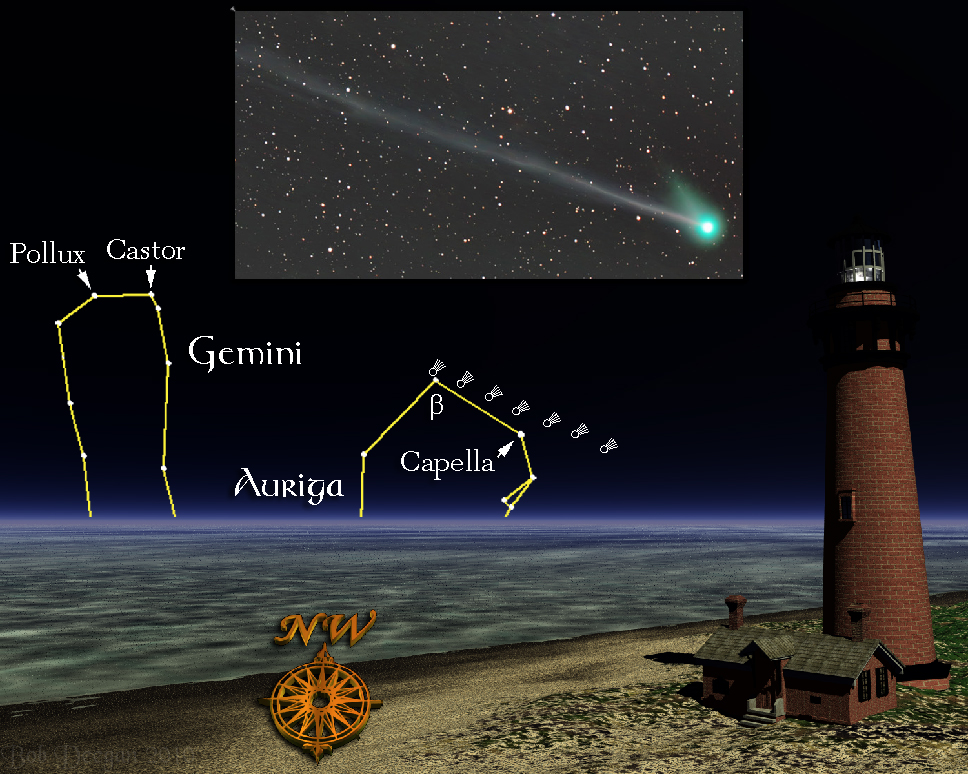
For the week including June 18, 2010

COMET MCNAUGHT
There are few sights in nature that are as breathtaking as the arrival of a Great comet. History provides us with tantalizing glimpses of how they must have appeared. The Great Comet of 1577 was reported to have had a tale that stretched most of the way across the night sky and Donati's Comet, discovered in 1858, sported a tail that spanned more than half the distance from the horizon to the top of the sky. My favorite would have been the Great Comet of 44 BC. This comet is featured in Chinese history and was commemorated on the coinage of ancient Rome. Arriving during the funeral games Octavian gave to honor the late Julius Caesar, the sidus crinitum (“hairy star”, Latin for comet) grew so brilliant that it showed plainly in the sky at midday. Popularly known as Caesar’s Star, the comet of 44 B. C. escaped much of the bad press associated with comets generally. For ages, comets were thought to be omens of misfortune, a disturbance among the normally unchanging stars. But, because it became tied to the legends growing about Rome’s greatest leader, the comet was thought to be a sign that the gods themselves looked on Julius Caesar with favor.
Great comets are rare, but each year there are a few, more ordinary ones, that are a lot of fun to watch. This month, Comet McNaught (shown in the photograph by Rich Richins at top) is just visible to the naked eye as it tours the solar system. Though not a Great comet, McNaught would have to rank as a Fairly Nice one. It shows up very well in binoculars and a telescope will give an even more detailed view. The comet is heading toward the Sun and is now visible just after sunset, or before dawn.
To see Comet McNaught after sunset, go to a clear, dark place that has a good view of the northwestern sky. Once you’re there, find the bright star Capella in the constellation of Auriga, the Charioteer. (You can use the bright stars Castor and Pollux in Gemini as aids to its location.) When you’ve done this, compare today’s diagram to the stars. Our illustration shows the position of Comet McNaught tonight and on successive nights through the 24th as it travels through Auriga (June 18th is on the right and June 24th’s position is at the far left).
On a good night you may pick it up with unaided vision, but with binoculars, you will see more of the comet’s shroud of gases, called a coma.
Unless otherwise indicated, all content of this web site is the copyright of Robert Deegan and all rights are reserved.
For more information, or to comment, please contact: Bob@NightSkies.org